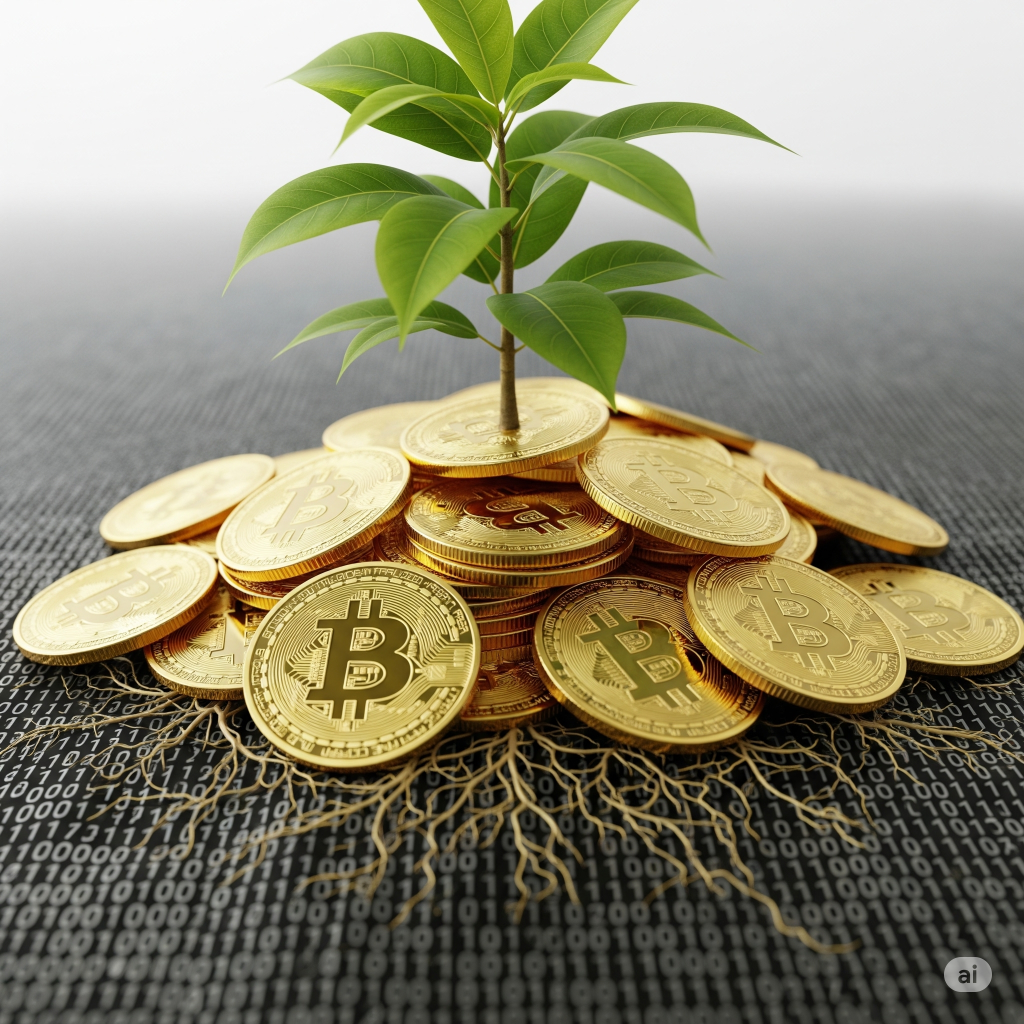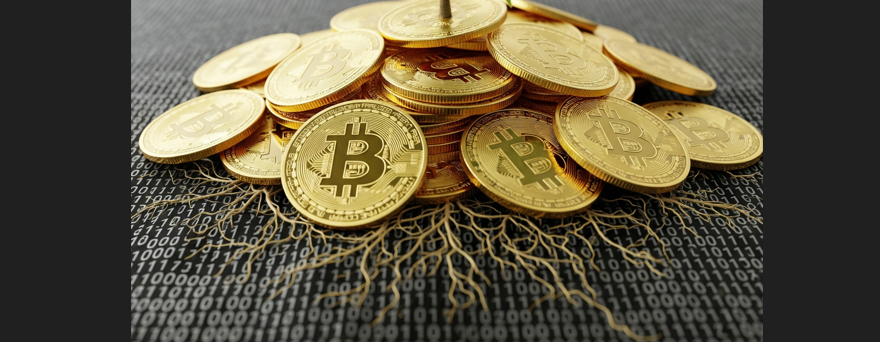💸 The Digital Farm: How Cryptocurrencies Like Bitcoin Are Actually ‘Grown’

These days, on every street corner and in every online forum, you’ll hear the same advice: “Dude, buy Bitcoin! It’s the future!” But what’s the story behind the scenes? How is this digital money actually created? Are people really just printing money on their computers?
Let’s break down the agriculture of this digital world, process by process. Forget the complicated technical jargon; imagine we’re in a digital village, and our job is to “grow” money.
🌱 1. The Farm: What on Earth is a Blockchain?
Every cryptocurrency is grown on a piece of “land” we call the Blockchain. But this isn’t ordinary land; it’s a magical, shared field.
Imagine a village where every single house has a copy of the same public ledger (bahi-khata). Whenever a transaction happens in the village, an entry is made in every single household’s ledger, all at the same time.
- An Open Book for Everyone: No one can hide a transaction. If Ram gives Shyam 10 coins, that fact is recorded in the ledgers of the entire village.
- No Single Boss: There’s no single owner or village chief. The power belongs to the entire network (the village). This is called decentralization. No government or bank owns it.
- The Overseers: The job of maintaining this ledger and verifying new transactions is done by “Miners” or “Validators.” They are the overseers of this digital village, tasked with keeping the system honest and secure.
⚒️ 2. Sowing the Seeds: How Are New Coins Born?
Just as a farmer works hard in the fields to grow a crop, new coins are “mined” on the blockchain through hard work.
When a “page” in the ledger (called a Block) gets filled with transactions, that page needs to be sealed and added to the book. But this isn’t an easy task.
To seal the page, the system creates a very difficult and unique mathematical puzzle (a cryptographic puzzle).
Thousands of “overseers” (miners) from around the world use their powerful computers to try and solve this puzzle. The first miner to solve it gets a reward.
And what’s the reward? Brand new, freshly created coins!
This is the “digital money printing” you’ve heard about. But instead of a printing press, it requires immense computing power and ingenuity.
🧠 3. The Difficult Puzzle: The Lock and a Billion Keys
This isn’t your high school math problem. It’s a puzzle with no direct formula. There’s only one way to solve it: Keep trying until you find the right answer (Brute-Force).
Think of it like this:
- You are given a unique lock (hash) and billions of keys.
- Your computer tries millions of different keys every second.
- The puzzle is something like this: “Find a unique key (a number) that, when combined with all the data on the page (the block), creates a new lock (hash) that begins with, for example, 10 zeros.”
The computer that finds the right key first wins. It gets to “lock” the block, making it a permanent part of the chain. This process is made incredibly difficult on purpose to prevent anyone from cheating the system.
🪙 4. Reaping the Harvest: The Reward System
When a miner wins the race to solve the puzzle, they get the fruits of their labor. This reward comes in two forms:
- The New Crop (New Coins): The system rewards the miner with brand new coins that are created out of thin air, according to the rules in the code. For example, Bitcoin’s code dictates that every new block (created roughly every 10 minutes) will generate 6.25 new BTC for the winner.
- Market Fees (Transaction Fees): All the people whose transactions were recorded on that “page” (block) also paid a small fee. The winning miner gets to collect all of these fees as well.
A Special Rule (The Halving): In currencies like Bitcoin, there’s another rule. Every four years, the reward for creating new coins is cut in half. This is called the Halving. It ensures that the supply of new coins is controlled and limited, which can help increase their value over time.
🧩 5. What’s the Real Purpose of This Digital Farm?
This isn’t just a scheme to make money. Its real purpose is to change the world of finance:
- Payments Without a Middleman: It’s a payment system where you don’t need a bank. You can send money directly to anyone, anywhere in the world.
- Digital Promises (Smart Contracts): Currencies like Ethereum offer a feature called “smart contracts.” This is an automated agreement where the code itself is the lawyer and the judge. For example, “If the package is successfully delivered, then the payment will be released automatically.” There’s no room for human dishonesty.
- Real Power to the People: Its biggest advantage is that power isn’t concentrated in the hands of a single company or government.
📊 Bonus: Not Every Crop is the Same!
All crypto coins are not created the same way.
- Bitcoin (Proof-of-Work): This is “farming through hard labor.” Whoever has the most powerful computers (tractors) and uses the most electricity (fuel) has the best chance of winning.
- Ethereum (Proof-of-Stake): This is more like a “land ownership system.” Here, it’s not about hard work, but about how many coins you already own. You “stake” (lock up) your coins as collateral for a chance to be chosen to verify a block and earn rewards.
- BNB (Burning): This exchange periodically “burns” some of its coins to reduce the total supply, making the remaining coins scarcer and potentially more valuable.
- Mobile Mining Apps (Pi, Blove, etc.): For now, think of these as a “promise of a farm.” They are not yet operating on a fully functional, decentralized blockchain. Their real value will only be known when their technology is fully live.
🔚 The Final Word: So, Is It Really a Money-Printing Machine?
No! Absolutely not.
It is a high-tech way to earn money, but it requires serious effort, investment, and knowledge. Mining requires expensive computers and consumes a massive amount of electricity.
So, the next time someone tells you to “get into crypto,” don’t just see it as an investment. See it for what it is: the world’s most transparent, technology-driven financial system. It’s not a shortcut; it’s a blueprint for the future.

